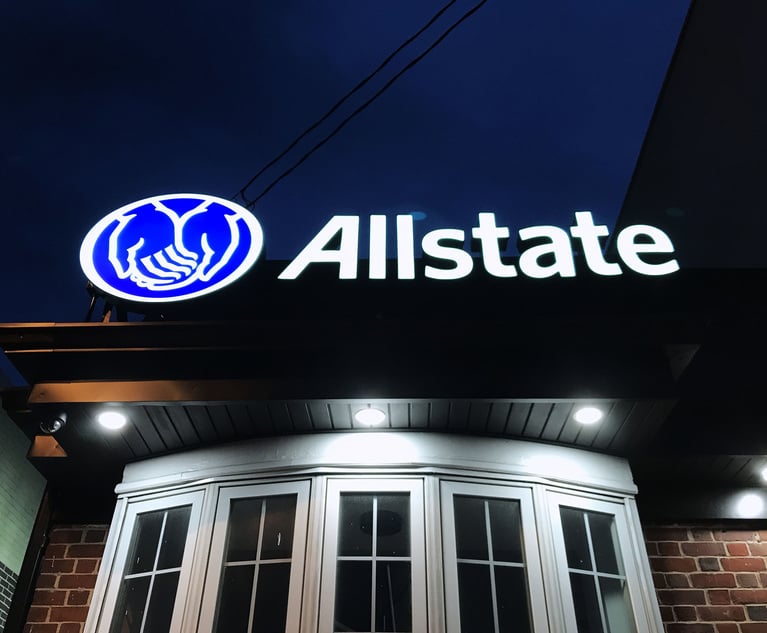Trade Secret's Inherent Value, Part 1: Avoided Costs and Trade Secret Damages
Whether damages should be directed at calculating the value of a trade secret or at calculating tangible losses incurred by the plaintiff is a fundamental issue tackled in a recent appellate decision out of New York.
July 03, 2019 at 12:00 PM
6 minute read
 Esha Bandyopadhyay, a principal in Fish & Richardson's Silicon Valley office, and Kain Day, an associate with the firm.
Esha Bandyopadhyay, a principal in Fish & Richardson's Silicon Valley office, and Kain Day, an associate with the firm.
In E.J. Brooks Co. v. Cambridge Security Seals, 105 N.E.3d 301 (N.Y. 2018), the New York Court of Appeals addressed two questions certified by the Second Circuit. In the underlying suit, E.J. Brooks claimed that several of its employees defected to Cambridge Security Seals—misappropriating E.J. Brooks's trade secrets, engaging in unfair competition, and unjustly enriching Cambridge Security Seals. To measure damages, E.J. Brooks relied on the costs Cambridge avoided as a result of its unlawful activity. Specifically, for the trade secret cause of action, E.J. Brooks claimed that Cambridge avoided certain development costs.
One question before the court of appeals—among related questions—was whether New York common law allowed E.J. Brooks to rely exclusively on Cambridge's avoided costs to measure trade secret misappropriation damages. The Uniform Trade Secret Act, which has been adopted by almost each and every state, expressly permits this method of calculating damages. But New York has not adopted that act, and New York courts had not addressed this question. Over a strong dissent, the court held that the plaintiffs cannot solely rely on a defendant's avoided costs to measure trade secret misappropriation damages.
Essentially, the majority and dissent in E.J. Brooks disagree over what a plaintiff loses when a defendant misappropriates a trade secret. The majority takes a narrow view, holding that the plaintiff loses either profits or its own development costs. The dissent takes a broader view, arguing that the plaintiff loses the value of the trade secret, and that this value can be measured in many ways. That is, the dissent believes that trade secret damages should measure the trade secret's value, and that the value can be measured using a defendant's avoided costs. The majority disagrees.
The Majority's Position
The New York Court of Appeals held that a defendant's avoided costs are not an appropriate measure of trade secret damages unless the plaintiff shows that those avoided costs serve as a proxy for the plaintiff's actual development costs. Implicitly, this holding makes a statement about the purpose of trade secret remedies.
To reach its holding, the court of appeals relied heavily on prior New York intermediary appellate court precedent stating that trade secret damages may not be measured by a defendant's increased profits, unless those profits are evidence of the plaintiff's own losses. The defendant's profits did not directly measure the plaintiff's lost competitive advantage, so they were not an appropriate measure of harm to the plaintiff. Extending that reasoning to the defendant's avoided costs, the court held that the defendant's avoided costs do not measure harm to the plaintiff. Instead, a defendant's avoided costs measure a benefit to the defendant. Therefore, under New York common law principles, avoided costs are not an appropriate measure of trade secret damages unless they are evidence of the plaintiff's actual development costs.
The majority's holding turns on a particular understanding of the injury resulting from trade secret misappropriation. To the court, “the plaintiff's injury in trade secret misappropriation cases includes the loss of competitive advantage over others by virtue of its exclusive access to the secret.” Primarily, that “loss of competitive advantage” manifests in lost profits. But “where disclosure of a trade secret has destroyed that competitive edge, the plaintiff's costs of developing the product may be the best evidence of the value that the plaintiff placed on the secret.” While the court's language is merely inclusive—i.e., that the plaintiff's injuries “include,” rather than “only include”—the court seems to assume this loss of competitive advantage is the only compensable injury resulting from trade secret misappropriation.
If the plaintiff's lost profits or actual development costs are viewed as the only compensable injuries resulting from trade secret misappropriation, then this view implicitly suggests that the underlying purpose of any remedy is to address the plaintiff's harms resulting from misappropriation.
The Dissent's Position
Judge Rowan Wilson, in dissent, takes a fundamentally different position with respect to trade secret valuation. Instead of considering the plaintiff's harm narrowly—as direct harms to the plaintiff, e.g., the plaintiff's lost profits or development costs—Wilson considers the plaintiff's harm more broadly. To Wilson, remedies should measure the value of the trade secret, which is not entirely captured in lost profits or development costs.
Wilson disagrees with the majority's framing of the injury resulting from trade secret misappropriation. To him, “the plaintiff's loss is the loss in value of the trade secret” and “that loss can be measured in several ways …” That value includes “the lost profits a plaintiff might have made without the theft, the loss in potential exclusive licensing opportunities, the loss in the value of the trade secret once exposed, and perhaps most importantly, the lost incentive for other to expend their time and efforts on innovation.” This is broader than the plaintiff's “loss of competitive edge,” which—at least under the majority's framing—only includes the plaintiff's lost profits or development costs.
Essentially, Wilson believes that the majority missed the point of damages—to value the trade secret. The issue is whether the defendant's avoided costs measure the value of the trade secret, not whether the defendant's avoided costs serve as a proxy for the plaintiff's avoided costs. The former is aimed at calculating the inherent value of the trade secret—the purpose of remedies—and the latter is aimed at compensating the plaintiff for certain losses Under the majority's view, however, trade secrets do not possess inherent value.
Broader Lessons
Though E.J. Brooks arose from unique circumstances, based on the common law nature of New York trade secret law, its implications are far from unique. Whether damages should be directed at calculating the value of an intellectual property asset—as the dissent believes—or at calculating tangible losses incurred by the plaintiff—as the majority believes—is a fundamental issue for intellectual property remedies.
Stay tuned for Part 2 of this series, in which we address how varying perspectives on trade secrets' inherent value may affect trade secret reasonable royalty damages.
Esha Bandyopadhyay, a principal in Fish & Richardson's Silicon Valley office, has been practicing intellectual property and technology-related commercial litigation and counseling in the Bay Area for close to two decades.
Kain Day is an associate in the firm's Silicon Valley office. He maintains a broad practice, focusing on commercial, trade secret and patent litigation matters.
This content has been archived. It is available through our partners, LexisNexis® and Bloomberg Law.
To view this content, please continue to their sites.
Not a Lexis Subscriber?
Subscribe Now
Not a Bloomberg Law Subscriber?
Subscribe Now
NOT FOR REPRINT
© 2025 ALM Global, LLC, All Rights Reserved. Request academic re-use from www.copyright.com. All other uses, submit a request to [email protected]. For more information visit Asset & Logo Licensing.
You Might Like
View All
State Appeals Court Revives BraunHagey Lawsuit Alleging $4.2M Unlawful Wire to China
3 minute read

Apple Disputes 'Efforts to Manufacture' Imaging Sensor Claims Against iPhone 15 Technology

Lawsuit alleges racial and gender discrimination led to an Air Force contractor's death at California airfield
7 minute readTrending Stories
- 1'A Death Sentence for TikTok'?: Litigators and Experts Weigh Impact of Potential Ban on Creators and Data Privacy
- 2Bribery Case Against Former Lt. Gov. Brian Benjamin Is Dropped
- 3‘Extremely Disturbing’: AI Firms Face Class Action by ‘Taskers’ Exposed to Traumatic Content
- 4State Appeals Court Revives BraunHagey Lawsuit Alleging $4.2M Unlawful Wire to China
- 5Invoking Trump, AG Bonta Reminds Lawyers of Duties to Noncitizens in Plea Dealing
Who Got The Work
J. Brugh Lower of Gibbons has entered an appearance for industrial equipment supplier Devco Corporation in a pending trademark infringement lawsuit. The suit, accusing the defendant of selling knock-off Graco products, was filed Dec. 18 in New Jersey District Court by Rivkin Radler on behalf of Graco Inc. and Graco Minnesota. The case, assigned to U.S. District Judge Zahid N. Quraishi, is 3:24-cv-11294, Graco Inc. et al v. Devco Corporation.
Who Got The Work
Rebecca Maller-Stein and Kent A. Yalowitz of Arnold & Porter Kaye Scholer have entered their appearances for Hanaco Venture Capital and its executives, Lior Prosor and David Frankel, in a pending securities lawsuit. The action, filed on Dec. 24 in New York Southern District Court by Zell, Aron & Co. on behalf of Goldeneye Advisors, accuses the defendants of negligently and fraudulently managing the plaintiff's $1 million investment. The case, assigned to U.S. District Judge Vernon S. Broderick, is 1:24-cv-09918, Goldeneye Advisors, LLC v. Hanaco Venture Capital, Ltd. et al.
Who Got The Work
Attorneys from A&O Shearman has stepped in as defense counsel for Toronto-Dominion Bank and other defendants in a pending securities class action. The suit, filed Dec. 11 in New York Southern District Court by Bleichmar Fonti & Auld, accuses the defendants of concealing the bank's 'pervasive' deficiencies in regards to its compliance with the Bank Secrecy Act and the quality of its anti-money laundering controls. The case, assigned to U.S. District Judge Arun Subramanian, is 1:24-cv-09445, Gonzalez v. The Toronto-Dominion Bank et al.
Who Got The Work
Crown Castle International, a Pennsylvania company providing shared communications infrastructure, has turned to Luke D. Wolf of Gordon Rees Scully Mansukhani to fend off a pending breach-of-contract lawsuit. The court action, filed Nov. 25 in Michigan Eastern District Court by Hooper Hathaway PC on behalf of The Town Residences LLC, accuses Crown Castle of failing to transfer approximately $30,000 in utility payments from T-Mobile in breach of a roof-top lease and assignment agreement. The case, assigned to U.S. District Judge Susan K. Declercq, is 2:24-cv-13131, The Town Residences LLC v. T-Mobile US, Inc. et al.
Who Got The Work
Wilfred P. Coronato and Daniel M. Schwartz of McCarter & English have stepped in as defense counsel to Electrolux Home Products Inc. in a pending product liability lawsuit. The court action, filed Nov. 26 in New York Eastern District Court by Poulos Lopiccolo PC and Nagel Rice LLP on behalf of David Stern, alleges that the defendant's refrigerators’ drawers and shelving repeatedly break and fall apart within months after purchase. The case, assigned to U.S. District Judge Joan M. Azrack, is 2:24-cv-08204, Stern v. Electrolux Home Products, Inc.
Featured Firms
Law Offices of Gary Martin Hays & Associates, P.C.
(470) 294-1674
Law Offices of Mark E. Salomone
(857) 444-6468
Smith & Hassler
(713) 739-1250






